The Metrobank Art & Design Excellence Awards (MADE) provides a venue for young artists to discover, not just themselves, but the excellence they are capable of. More than three decades after it began, the winners of this year’s national art competition provide, as their predecessors did, a perspective of the world that is their reality as much as it is ours
Ultimately, “Discovery”—the theme of the 2018 Metrobank Art & Design Excellence Awards (MADE)—was what brought the competition into existence. Conceived way back in the 80s by no less than Metrobank founder, Dr. George S.K. Ty, a painting competition was planned, organized and launched in order that the Filipino youth may discover themselves. Lost and hurting because of the then political and economic upheaval of the times, their spirits were in need of healing and finding their sure footing in a country that had displaced them, and worse, left them with an uncertain future.
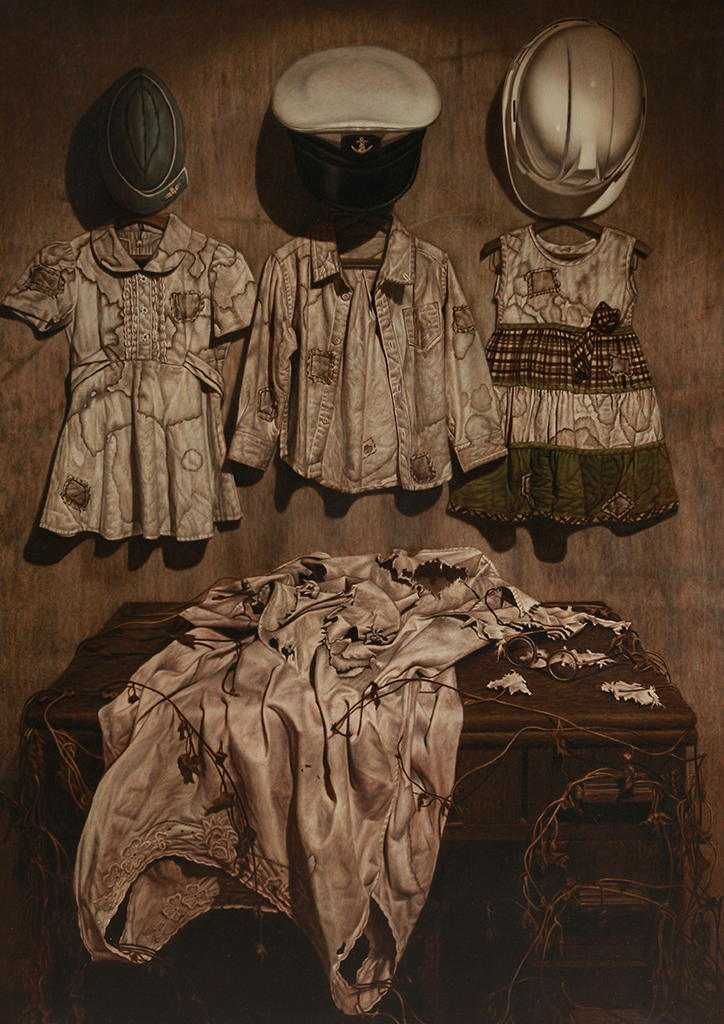
Oil on canvas
Francis Eugene Andrade
Discovery of Excellence
Art—in particular, the visual arts—was deemed as the avenue in which the youth could connect once again with the human spirit. Participating in a competition, they came face-to-face with their own youthful dreams, ambitions and talents that may have lain dormant, undiscovered and concealed in the smoke and heat of national disturbance. Here was a young Filipino’s way to redemption, guided through a journey that inspired him to heights he may heretofore never have known he was capable of reaching.
Discovery was the sole purpose of the art competition, which was renamed the Metrobank Art and Design Excellence Awards (MADE). It was a discovery of excellence inherent in the Filipino youth, exhorted to challenge himself, that led to the discovery of numerous genuine talents, who are now at the front rank of contemporary Philippine art. Many young painters won their prizes which eluded them for years. Some people may think winning is a matter of luck, but luck never really comes into the equation. Talent will out, and with persistence, the youth discover the stuff they are made of and that time is on their side.
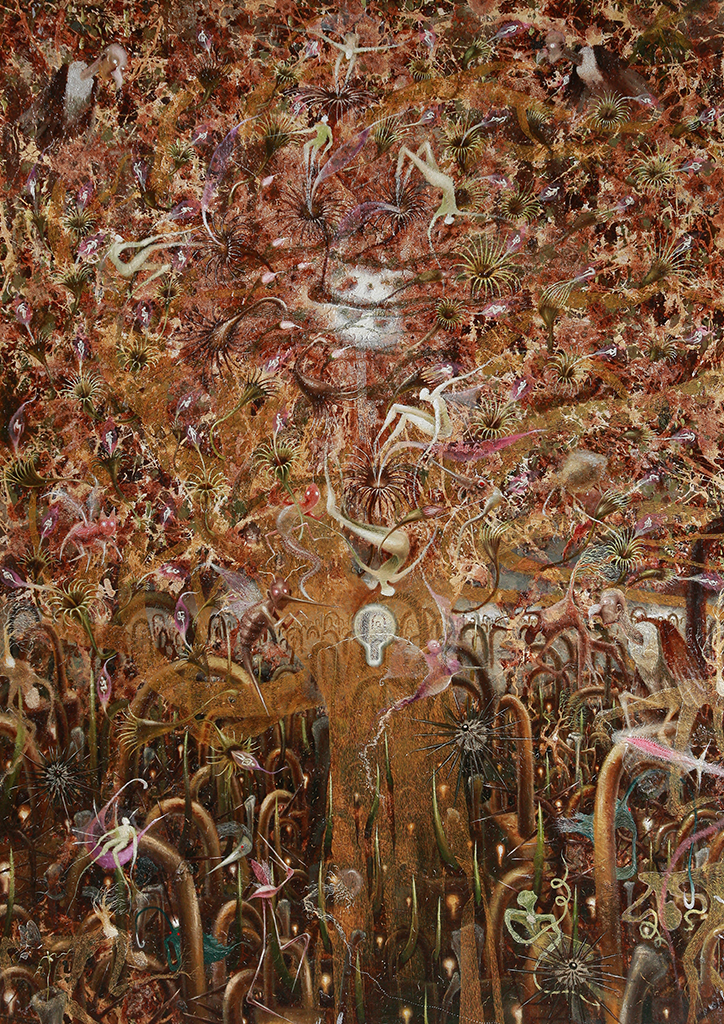
Oil on canvas
Noel Magallanes Elicana
Discovery of the Age
After more than three decades, every imaginable style or approach to art has been discovered, even re-discovered. Artistic idioms come and go, one ism following another: from Realism to Expressionism, Surrealism to Impressionism, Abstract Expressionism to Pop Art, from Minimalism to Magic Realism. Each artist must discover for himself the real substance behind his art for style is merely a conduit, a channel for conveying his message, and technique, a mere method of activity that clarifies the meaning of his art. Without this enlightened communication and an emotional relationship with the audience, the activity of painting will remain simply on the level of craft.
The young artist cannot paint in a vacuum, working as if he exists in a void, unaware and untouched by the currents and energies of the times in which he lives in. No better proof is there than the winning works in the Painting Category, both in the oil/acrylic and water-based media. Like Veronica’s bloodied veil, these works are indicative and revelatory, mirroring the age in which the millennial artist exists, bound by the personal crises that may engulf him, engendered by such harsh realities as the war on drugs, the relentless killings on the very streets he trods daily, the relentless diaspora of thousands of Filipino workers who leave home, family and country to make a living, or a radically misplaced ideology that has held a once peaceful and beautiful Mindanao city captive for months and left in shambles and ruins. The artist cannot remain imperturbable, standing outside the tremors and turmoils of his country.
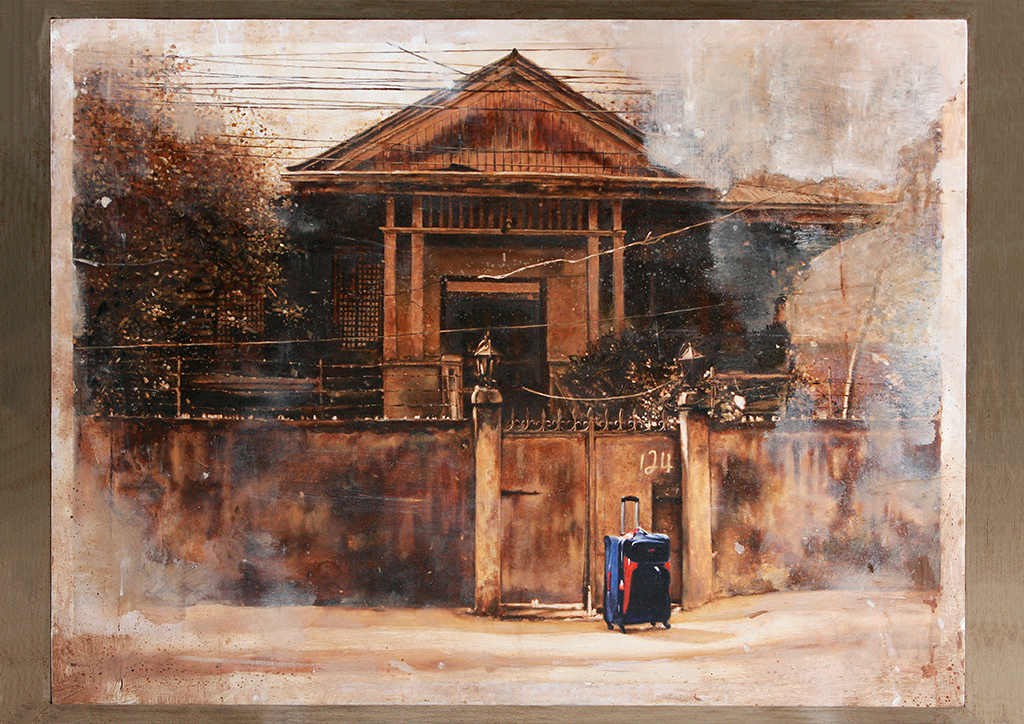
Oil on canvas
Roland Falcon Llanera
Private Grief, Abandonment and Nightmare
This year’s works that have been declared winners are paintings that have met the exacting standards of a sterling panel of judges, chosen as always for their visual acuity, perceptive analysis, and unquestionable integrity.
Declared Grand Prize Winner in the oil/acrylic category was “Kanya-Kanyang Tinik, Kanya-Kanyang Landas, Iisa ang Ginagalawan” by Noel Magallanes Elicana, who hails from Oton, Iloilo. Writes the artist: “My mother died when I was in elementary school….and it was the start of my family’s struggling times. But this has led to a positive purpose. I use my talent to survive.” With his candor and forthrightness in sharing a private grief, Elicano invites the viewer into his personal world. In his prize-winning work, he has created his own realities in a universal, metaphorical sense, reordering an organic vision of life, and revealing paths to joyousness and salvation.
For its sheer poignancy and lacerating symbolism, “The Sacrifice” by Francis Eugene Esguerra Andrade of Marilao, Bulacan was awarded a Special Citation. Hanging on a dim sepia wall, suffused with unspeakable sadness, are three children’s respective garments. Overhead them are a trio of head gear representing the country’s military and defense institutions.
Another Special Citation was awarded to “The Diminishing Memories of Home” by Roland Falcon Llarena of Rosario Cavite. The abandonment of a once loved domicile is here evoked by a luggage left by the gate, presumably by an Overseas Filipino Worker now off to the Middle East.
Grand Prize in the water-based media was garnered by “Destroyed,” an ode to the vanquished Mindanaoan city of Marawi by Alex Pampag Ordoyo of Santa Barbara, Iloilo. Viewed from a smoky distance are the hazy, multitudinous lines of structures signifying the once gracious domes and minarets of temples and mosques now lying in shambles and ruins. The nightmare that was Marawi will long remain an indelible scar on the national memory.
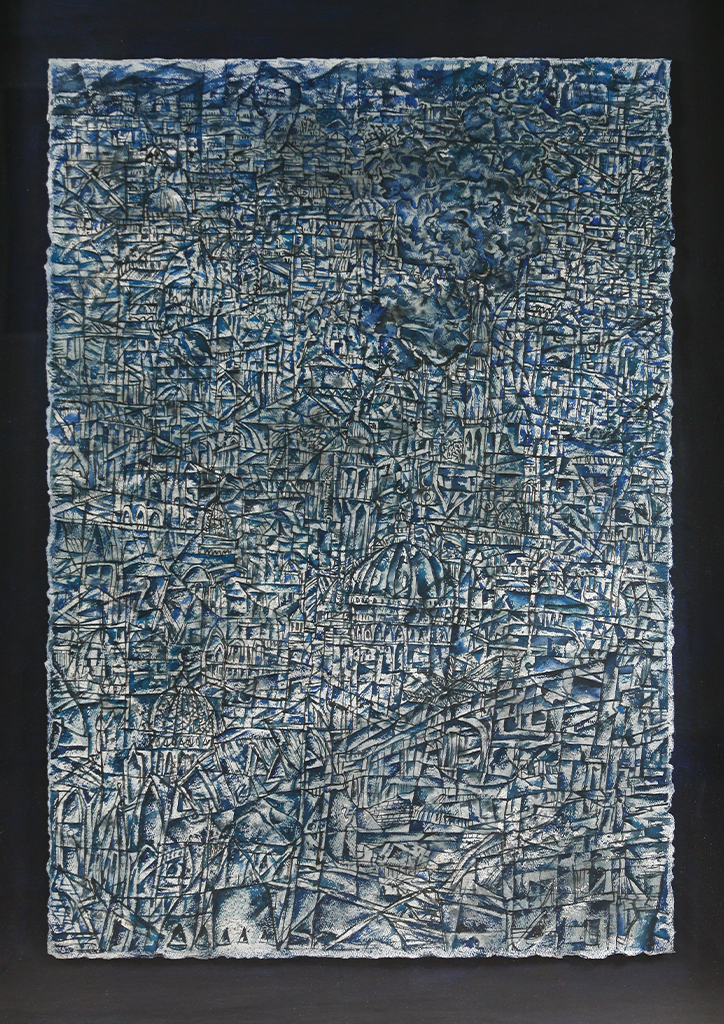
Watercolor on paper
Alex Pampag Ordoyo
Discovery is Recognition
The art of the three-dimensional has universally existed since prehistoric times when bones, wood, and stones were carved, whence emerged the figures of spiritual worship, invocations to fertility, or magical talismans. In our country, discovery of sculpture really equates with appreciation, for only in recent times have we gone past the concept of sculpture as historic monuments of heroes, the lowland Christians’ religious santos, and the Cordilleran rice granary gods, the bulul.
An institutional program that helps to propagate the appreciation of sculpture in our country is the MADE Sculpture Recognition Program, which made a call for entries and the participation of practicing Filipino sculptors. Admirable is the goal of integrating sculpture into the very presence and lives of the Filipino, indeed occupying the public’s physical space. Called “site-specific” works—meaning specifically conceived for a predestined place—the Atrium Lobby of the MET Live Mall are the five entries that comprised a final short list, presented as maquettes or sculptural studies, but are envisioned on a mammoth scale. These are: “Guardian of Intangible Heritage” by Ronald Jaramillo Hilario, “a tangible amalgamation of Philippine indigenous sculptural traditions, rendered in a contemporary form, using the combined techniques of Ifugao bulul, santo-making, and Maranao okir”; “Dream Weaver” by John Paul Dalisay, inspired by the traditional and culturally significant heirloom, a contraption used by our ancestors to weave fabric; “Bamboo Tesselate” by Gerardo Leonardo, a contemporary expression of the Filipino Family, designed along the Bamboo Organic form; and “The Oasis” by Joan Balbarona Anila, intended as a peaceful and relaxing area in our hectic everyday lives.
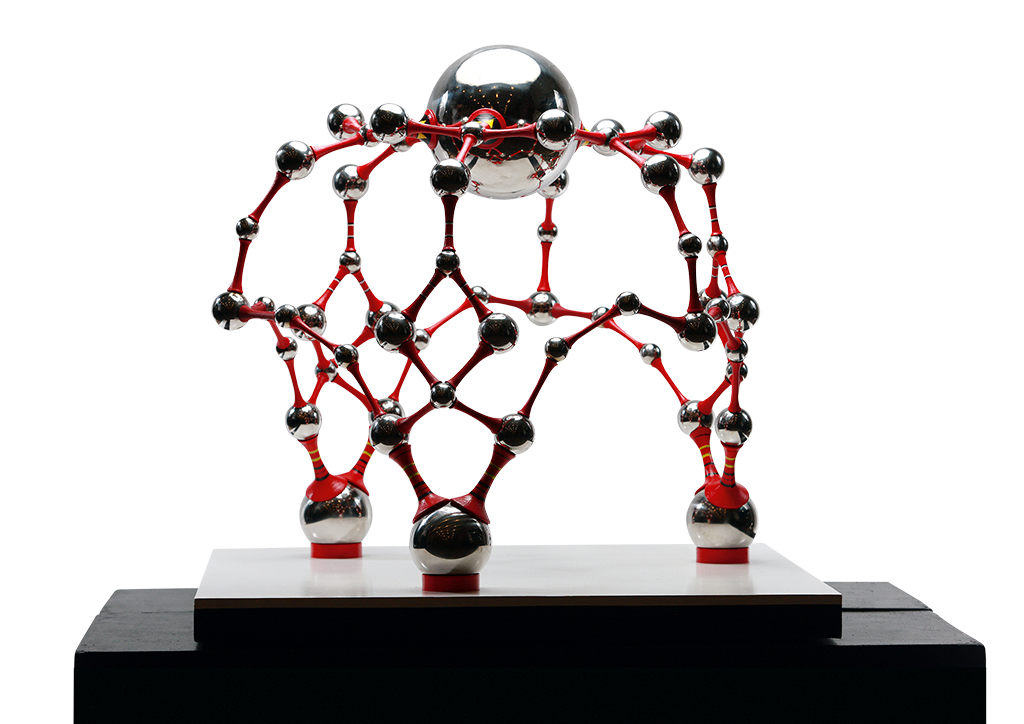
Stainless steel, polylactide
Maria Ronna Lara-Bes
Discovery of the Filipino Soul
The jury decided to award the Grand Prize to an entry fittingly titled “Interconnected,” a concept that highlights and instills the close relationship among Filipinos. Not just contemporary, but futuristic, is the look, temper and energy of this masterwork by Ronna Lara-Bes. The sculptor says of her work: “The futuristic-looking canopy is comprised of reflective stainless-steel spheres, supported internally by welded steel pipes that are connected inside fiberglass ‘stems’ bearing patterns inspired by the weaving designs found in the different regions of the country. I see the spheres as our islands, separated by waters, but linked through our shared identity as Filipinos. The entire look is cellular, with each component linked together to form a cohesive whole.”
Picasso once said: “There is no art. There are only artists.” But by whatever name is ascribed to these visual and physical emanations of the Filipino consciousness, imagination and spirit, these products of the deepest impulse of Filipino artists, they are the emerging and evolving definition of a racial identity and character. Discovering the Filipino soul has been the impelling force behind the vision and action of the Metrobank Art and Design Excellence awards.





